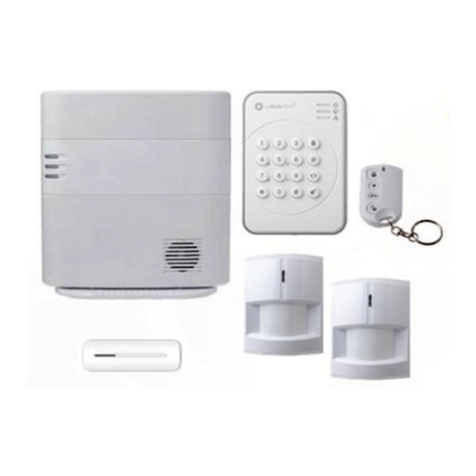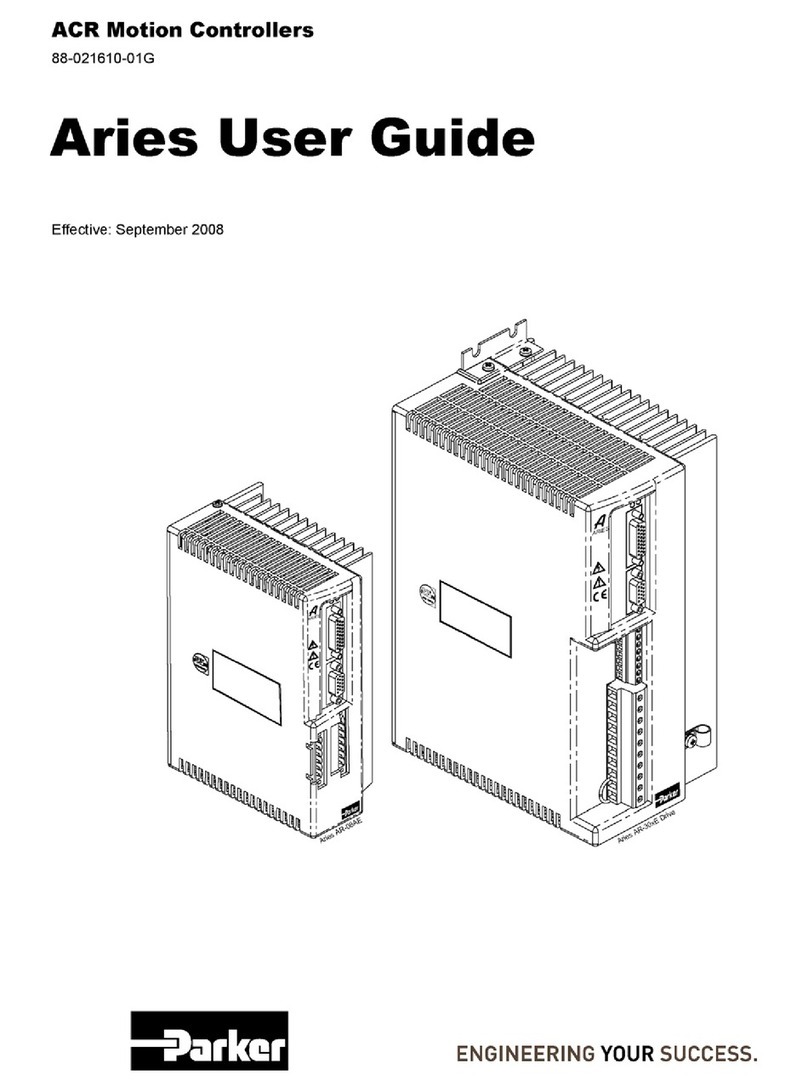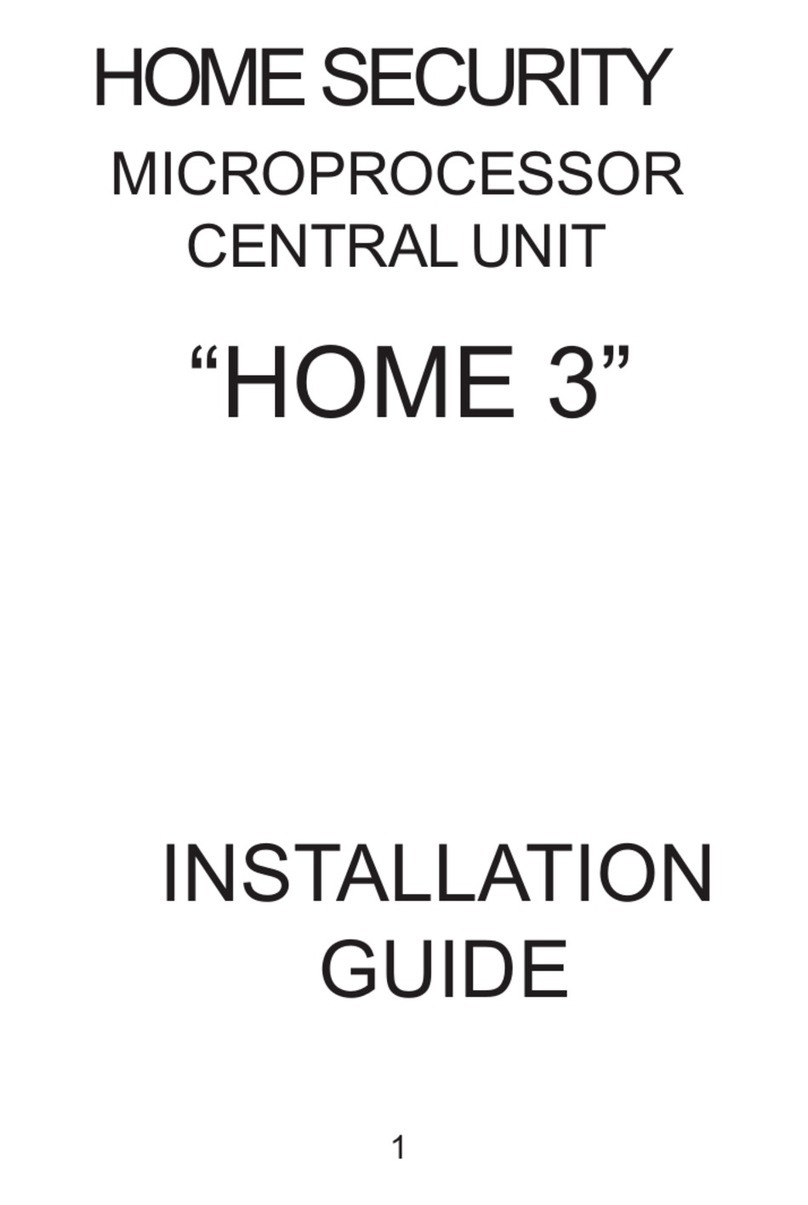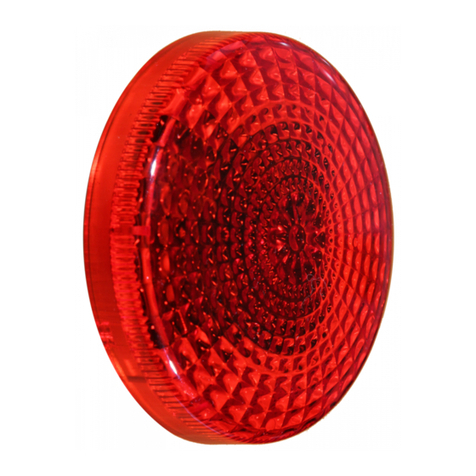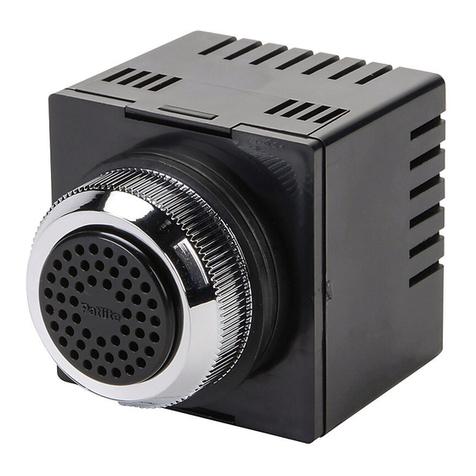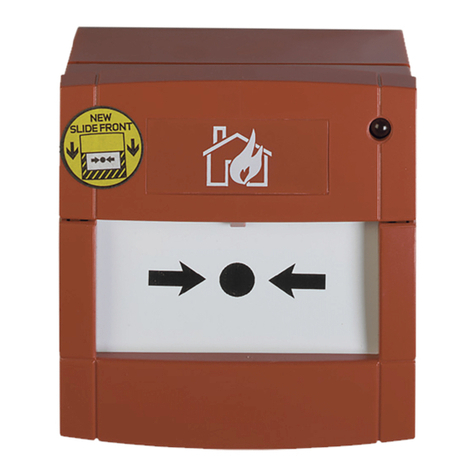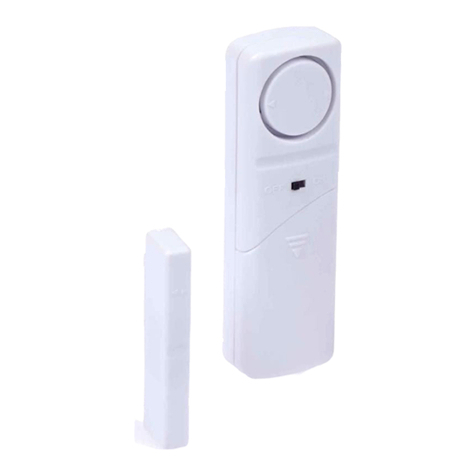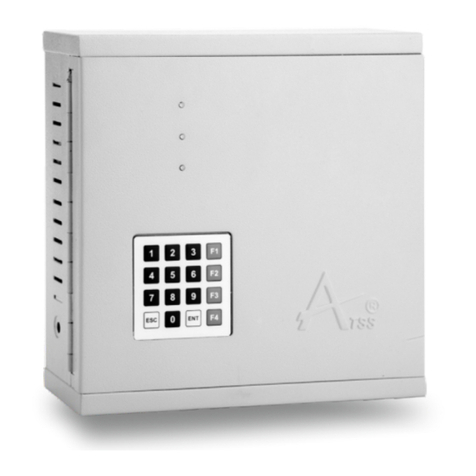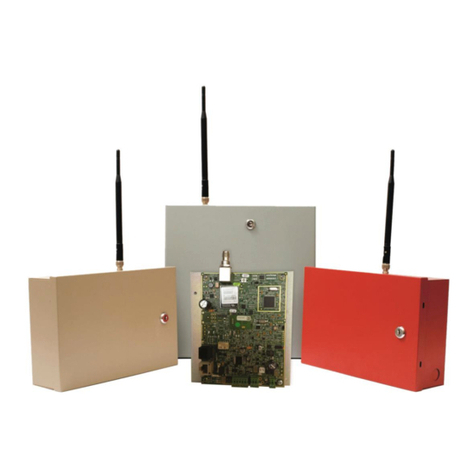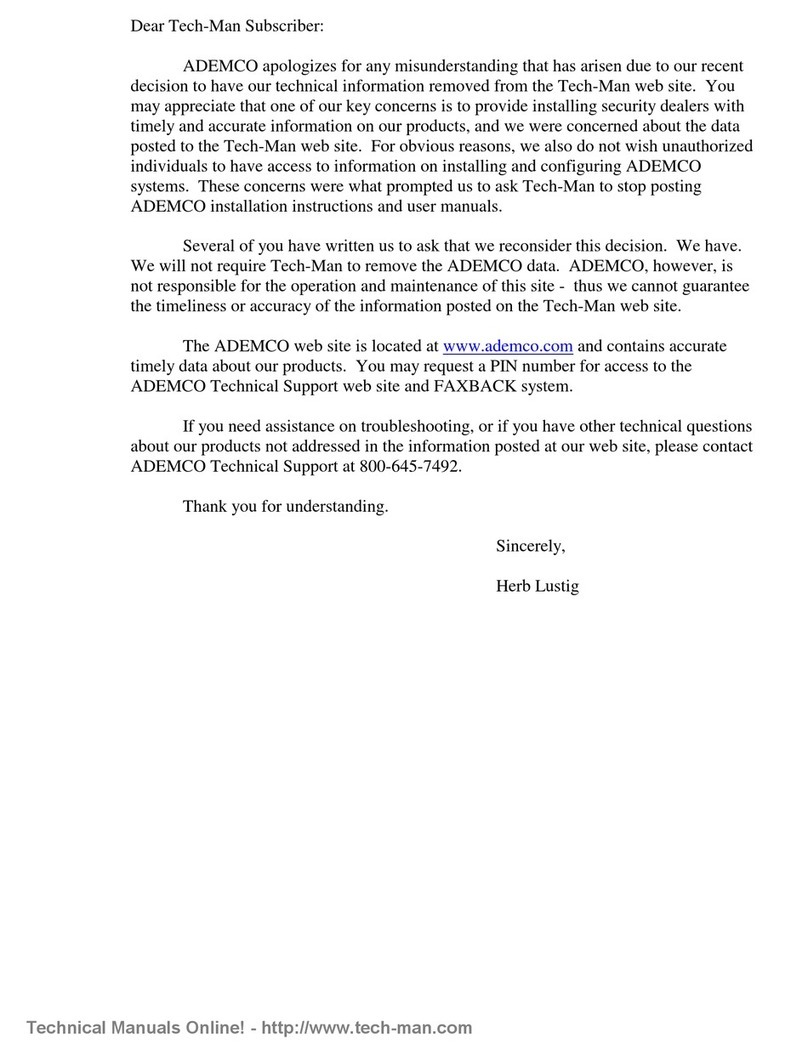Hekatron KonexXt CO One User manual

Ihr 100Pro Brandschutzpartner.
User manual
Carbon monoxide alarm
KonexXt CO One

60000135 · en · V1.0 · 05/2023
2
Contents
1. Carbon monoxide - what is it? ...........................4
2. Introduction .........................................6
3. Intended use ........................................8
4. Safety information ....................................9
5. Product description...................................10
6. Select location ......................................12
6.1 Rooms ........................................12
6.2 Position in room .................................14
7. Installation .........................................16
7.1 Wall assembly...................................16
7.2 Table installation.................................17
8. Commissioning the device .............................18
9. Normal operation ....................................19
10. Status signals ......................................20
10.1 Alarm........................................20
10.2 Alarm memory active ............................22
10.3 Message “Battery low”...........................23

60000135 · en · V1.0 · 05/2023 3
10.4 Message “device error” ..........................24
10.5 Message “End of lifespan” ........................25
11. Servicing and care ..................................26
11.1 Testing the alarm ...............................26
11.2 Cleaning .....................................26
12. Decommissioning the device ...........................26
13. Technical data......................................27
14. Conformity........................................28
15. Disposal ..........................................28

Carbon monoxide - what is it?
60000135 · en · V1.0 · 05/2023
4
1. Carbon monoxide - what is it?
Carbon monoxide (CO) is a colourless and odourless respiratory poison. It
arises when carbon-containing fuels such as oil, wood and gas are burned
incompletely. The causes of this are diverse (e.g. technical defects, a lack of
maintenance of combustion equipment or blocked chimneys due to birds’
nests).
Why is CO so dangerous?
CO can be neither seen, smelled or tasted. So it is breathed in completely
without notice. In addition, intoxication produces no typical symptoms such
as breathlessness or coughing. And since the gas can penetrate walls and
ceilings, there is also a potential risk in rooms adjacent to a CO source.
What happens when it is breathed in?
CO suppresses the oxygen in the blood and causes carbon monoxide intox-
ication. Depending on the CO concentration in the air and the length of
time for which one is exposed to CO, light or severe intoxication can occur.
The exact symptoms can vary depending on one’s state of health. Therefore,
the following table presents only examples of possible symptoms.

Carbon monoxide - what is it?
60000135 · en · V1.0 · 05/2023 5
Concentration Symptoms
150 ppm Light headache after approx. 1.5hours
200 ppm Headache, dizziness, nausea, tiredness after approx.
2to 3hours
400 ppm Strong headache in the forehead area
Death after approx. 3 hours
800 ppm Strong symptoms, loss of consciousness after 45min.
death after 2-3 hours
1600 ppm Strong symptoms after 20min.
Death within 1hour
i
In the case of very high concentrations, there is a threat of
acute danger and thus rapid loss of consciousness and death.
Behaviour in event of alarm
►Stay calm and promptly open all windows and doors.
►If possible, switch off all combustion equipment.
►Leave the building and leave the windows and doors open.
►Obtain medical assistance for persons with symptoms of CO intoxica-
tion and refer to CO as a possible cause.
►Contact the fire brigade, technical emergency services or specialist
installer and have the cause of the CO hazard source eliminated.

Introduction
60000135 · en · V1.0 · 05/2023
6
2. Introduction
i
This is the English translation of the German original operating
manual.
This manual applies to the carbon monoxide alarm KonexXt CO One, mostly
called “CO alarm” or “device” elsewhere in the text. The manual contains
all the important information and instructions for the safe and proper oper-
ation of the device.
You will find a PDF file of this manual on our website at:
hekatron-brandschutz.eu/en/downloads

Introduction
60000135 · en · V1.0 · 05/2023 7
This manual uses the following symbols and signal words:
Symbol/
signal word Meaning
WARNING Warning which could lead to serious injuries or death if it
is not observed
CAUTION Warning which could lead to light or medium injuries if it
is not observed
ATTENTION Warning which could lead to material damage or
functional defects if it is not observed
i
Reference to additional information
►Instruction
ÖResult of an action
-
List
The warnings are structured as follows:
SIGNAL WORD
Type and source of danger
Consequences in the event of non-compliance
►Measures for danger prevention

Intended use
60000135 · en · V1.0 · 05/2023
8
3. Intended use
-The CO alarm serves to detect carbon monoxide and sounds in the event
of dangerous concentrations.
-The CO alarm may be installed in residential buildings, apartments and
rooms with similar purposes.
-The CO alarm can be used exclusively as a standalone device.
Improper use
-The device may not be installed in outdoor areas.
-The device must not be used in leisure vehicles (e.g. mobile homes or
boats).
-The device is not a replacement for proper installation, operation and
maintenance of combustion equipment, including ventilation and exhaust
systems.
-The device is not designed to detect smoke, fire or other gases.
If the device is not used as intended, Hekatron Vertriebs GmbH shall not
assume any liability for resulting damage.

Safety information
60000135 · en · V1.0 · 05/2023 9
4. Safety information
If the safety and operating instructions are not observed, no liability and
warranty claims against Hekatron Vertriebs GmbH shall be enforceable.
General
-To ensure the proper and safe use of the CO alarm, please read the manu-
al thoroughly and carefully and follow the instructions.
-Keep the manual for future reference.
-Operate the device only in an undamaged state.
-The device must not be opened, reconstructed or modified.
-The battery is firmly installed and cannot be replaced.
-Do not cover or overcoat the device with paint.
-Do not knock over the device or expose it to shaking.
-Install the device outside the reach of children.
-The device must not be exposed to excessive moisture.
-Do not use air fresheners, hair sprays or other aerosols in the direct vicinity
of the device.

Product description
60000135 · en · V1.0 · 05/2023
10
5. Product description
Fig. 1: Front view
1 Openings for the acoustic alarm 4 “Test / Silence” button
(test button/mute button)
2 Red LED “ALARM” 5 Green LED “POWER”
3 Yellow LED “FAULT” 6 Display
1
2
3
4
5
6

Product description
60000135 · en · V1.0 · 05/2023 11
Fig. 2: Rear view
7 Mounting plate 9 Slanter for table setup
8 Inlet openings 10 Elongated holes for wall assembly
Scope of delivery
-CO alarm
-Mounting plate
-Attachment set for wall assembly (2screws and 2dowels)
-Operating manual
7
9
8
8
10
8

Select location
60000135 · en · V1.0 · 05/2023
12
6. Select location
ATTENTION
Selecting the correct location is decisive for the functioning of the CO
alarm.
►Select the location so that the detection of carbon monoxide is not
falsified or delayed due to draughts or obstacles.
6.1 Rooms
We recommend installation in the following areas:
-In all living rooms with combustion equipment (oil, gas, wood, etc.)
-In rooms in which one frequently spends time (e.g. living rooms and
bedrooms)
-1 CO alarm per floor
However, some rooms are not suitable at all, as, for example, dust or dirt
block the sensor and thus could delay the detection of CO.
Room Suitability and note
Bathroom Only if a CO hazard source is present, however limited
suitability due to high humidity and aerosols.

Select location
60000135 · en · V1.0 · 05/2023 13
Room Suitability and note
Kitchen Only if a CO hazard source is present.
Observe the following points:
-Lateral distance to a cooking appliance: at least 1m
-Not directly over the sink or cooker
-Not near the fume cupboard
Boiler room Not suitable; install directly in front of the boiler room
instead.
Garage Not suitable.
Interfering substances
The device may react to interfering substances and trigger the alarm. There-
fore, the device must not be exposed to interfering substances.
Examples of interfering substances include:
-Vapours from petrol, diesel, solvents, paints, polishing agents, oils and
organic cleaning liquids
-Exhaust gas emissions that develop for a short time (e.g. when starting an
engine)
-Hydrogen (e.g. when charging batteries or when concrete hardens)

Select location
60000135 · en · V1.0 · 05/2023
14
6.2 Position in room
General
The following conditions apply to the exact position:
-Outside the reach of children
-At usual breathing and head height (e.g. in the corridor: approx. 1.80m
above the floor; in the bedroom: at bed height)
-In hearing distance to sleeping areas
-Rooms with sloped ceilings: always install on the non-slanted wall
Unsuitable positions
Positions that are not suitable as locations:
-Near doors, windows or other inlet or exhaust air openings (e.g. fume
cupboard)
-Directly over a heat or steam source (e.g. radiator)
-Near ceiling fans
-Behind curtains or furniture
-On the ceiling

Select location
60000135 · en · V1.0 · 05/2023 15
Rooms with combustion equipment
max. 3 m
min. 1 m
min. 0,15 m
Fig. 3: Position in rooms with combustion equipment
In rooms with combustion equipment, the following applies in addition to
the general conditions:
-As near as possible to the CO hazard source but at least 1m and a
maximum of 3maway
-Minimum distance to ceiling: 15cm

Installation
60000135 · en · V1.0 · 05/2023
16
7. Installation
WARNING: The intended functioning of the device is only guaranteed if the
device has been installed correctly. Therefore, the device should be installed
by an expert.
7.1 Wall assembly
Fig. 4: Dimensions for wall assembly
►Mark the holes on the wall using the mounting plate.
CAUTION
Risk of injury due to electric shock or hot water.
Electric cables and water lines could become damaged.
►Select the position in a way that it can be ensured that no electric or
other supply lines can be damaged during drilling.
76 mm
ø 6 mm

Installation
60000135 · en · V1.0 · 05/2023 17
►Drill 2 holes (ø 6 mm, gap: 76mm).
►Insert the dowels into the holes.
►Attach the mounting plate to the wall using the screws.
7.2 Table installation
For table installation, the device must previously be commissioned (see
chapter „8. Commissioning the device“).
►Fold out the slanter on the back of the
device and lock it in place.
►Place the device on a flat surface and
check to ensure it is stable.

Commissioning the device
60000135 · en · V1.0 · 05/2023
18
8. Commissioning the device
►Slide the device onto the mounting plate until it locks in.
ÖAll 3 LEDs light up briefly.
ÖFor test purposes, the display briefly shows all segments:
ÖA countdown starts at “55” and the “POWER” LED flashes 1x per
second. During that time, the device carries out a self-check. Once
the countdown has finished, the device goes into normal mode and
is ready to use.
i
Upon commissioning, the time span of the typical service life of
10years begins.
9. Normal operation
In normal mode, the CO alarm continuously measures the CO concentration
in the air and shows the current value in the display.

Normal operation
60000135 · en · V1.0 · 05/2023 19
Signalling
: off
LED “POWER”: flashes approx. every 40 s
LED “FAULT”: off
LED “ALARM”: off
i
In the event of values under 30ppm, “0PPM” is displayed; in
the event of values over 999ppm, “999 PPM” is displayed.
If the CO concentration rises above 50ppm, the alarm is triggered (for
details, see section „10.1 Alarm“). The device thus protects from acute CO
intoxication.
i
The device does not prevent chronic effects of carbon monoxide
exposure and does not offer full protection to persons with special
risks.
Function of the “Test / Silence” button
In normal operation the “Test / Silence” button has 2 different functions:
-Short press (< 2 s): Calling up the alarm memory, see section 10.2
-Long press (> 2 s): Testing the alarm, see section 11.1

Status signals
60000135 · en · V1.0 · 05/2023
20
10. Status signals
10.1 Alarm
If the CO concentration rises above 50ppm, the alarm is triggered. How
quickly it is triggered depends on the CO concentration:
CO concentration Alarm triggering
as of 50 ppm within 60-90 min
as of 100 ppm within 10-40 min
as of 300 ppm within 3 min
Behaviour in event of alarm
►Stay calm and promptly open all windows and doors.
►If possible, switch off all combustion equipment.
►Leave the building and leave the windows and doors open.
►Obtain medical assistance for persons with symptoms of CO intoxica-
tion and refer to CO as a possible cause.
►Contact the fire brigade, technical emergency services or specialist
installer and have the cause of the CO hazard source eliminated.
This manual suits for next models
1
Table of contents
Popular Security System manuals by other brands

Detection Systems
Detection Systems DS7445 user guide
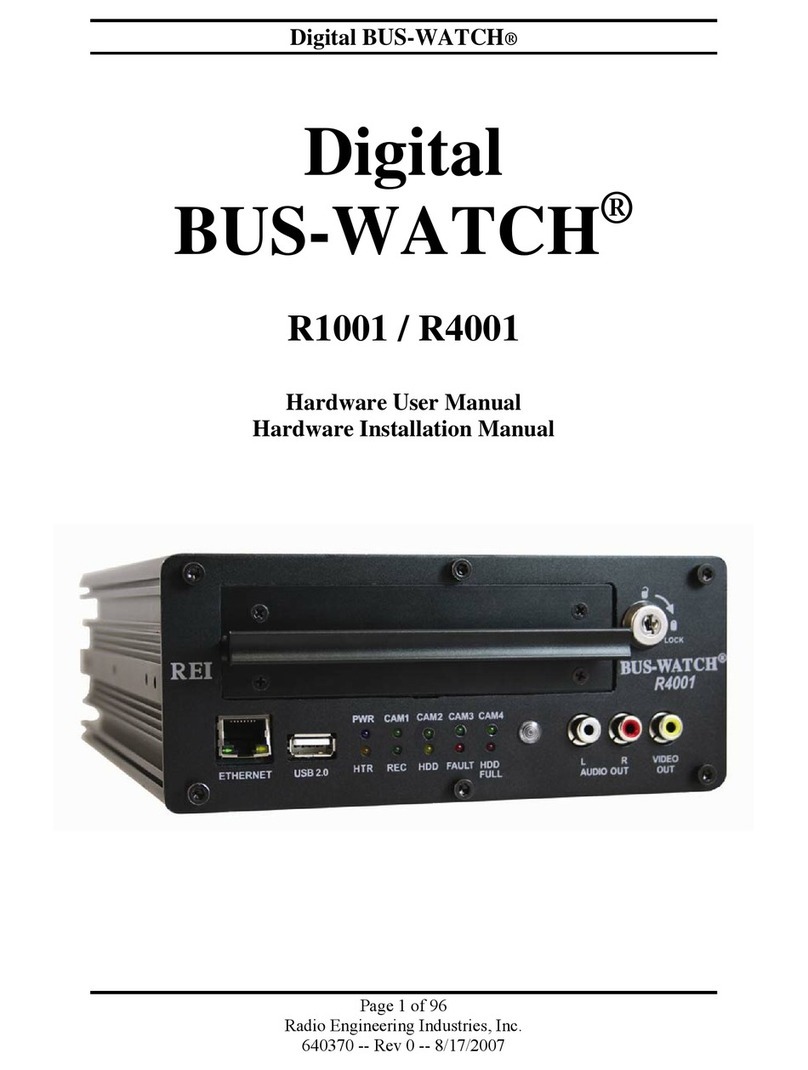
Radio Engineering Industries
Radio Engineering Industries Digital BUS-WATCH R1001 Hardware user manual
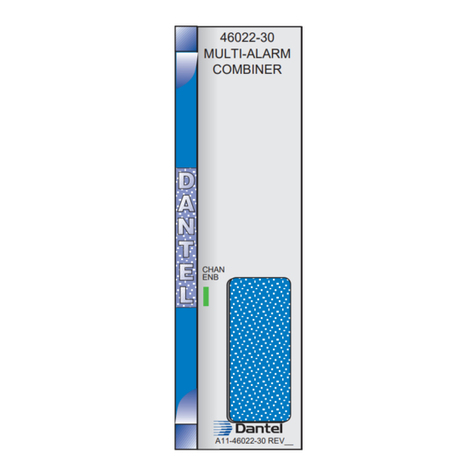
Dantel
Dantel 46022-30 Installation & operation manual
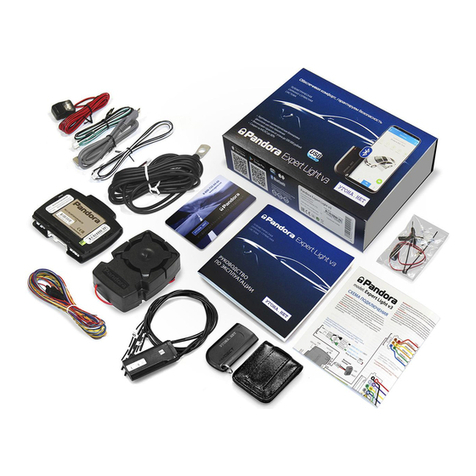
Pandora
Pandora Mini v3 user manual
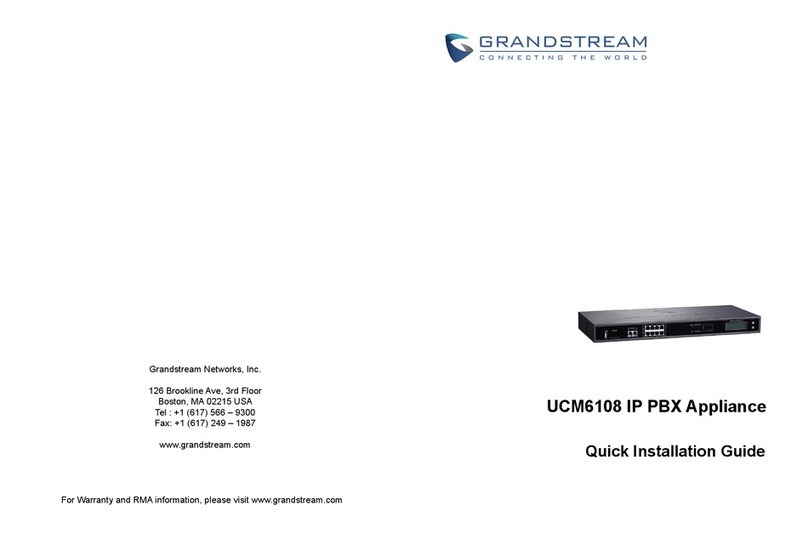
Grandstream Networks
Grandstream Networks UCM6108 Quick installation guide
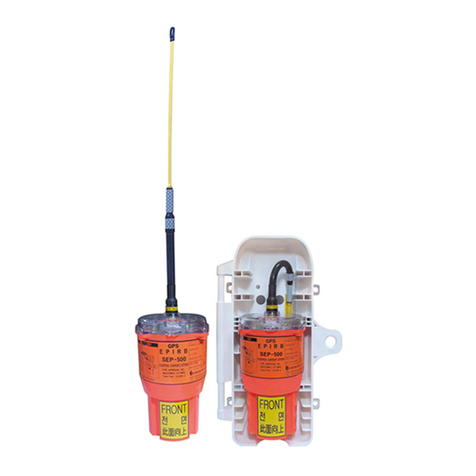
Samyung ENC
Samyung ENC SEP-500 instruction manual
